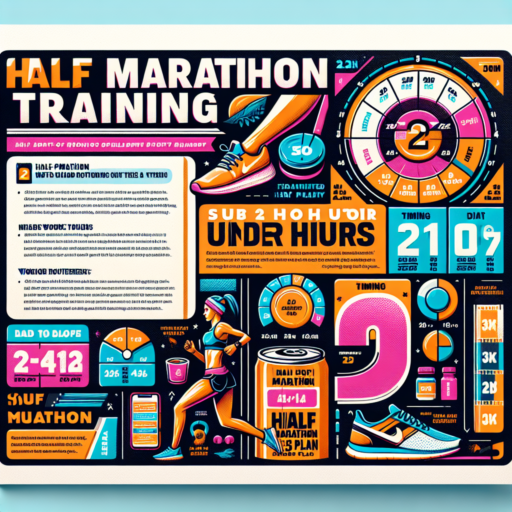How to train for speed for a half marathon?
Training for speed in a half marathon involves a blend of techniques focusing on both endurance and pace. Achieving a personal best time in a 21.1-km race requires a disciplined approach to training, integrating a variety of workouts to improve your overall running speed. By incorporating interval training, tempo runs, and long distance runs into your regimen, you can develop the stamina and speed needed for a half marathon.
Interval Training for Speed
Interval training is key to improving your speed. This involves running short distances at high speeds, followed by a brief period of rest or slow jogging. For instance, running 400 meters at a fast pace, then walking or slow jogging for a recovery period, and repeating this pattern multiple times can significantly enhance your speed. This type of training improves your aerobic capacity, which is crucial for maintaining a faster pace over the distance of a half marathon.
Incorporating Tempo Runs
Tempo runs, which are sometimes referred to as threshold runs, are essential for increasing your running speed. These runs are performed at a challenging pace, just below your maximum effort, for a continuous period. This ‘comfortably hard’ pace improves your lactate threshold, allowing you to maintain a faster pace for a longer period without fatigue. Including tempo runs into your weekly training plan will prepare your body to handle the demanding pace of a half marathon.
What pace should I run easy for half marathon training?
Determining the right pace for easy runs during half marathon training is crucial for enhancing endurance without overtaxing your body. A general guideline suggests that your easy run pace should be about 1 to 2 minutes slower per mile than your target half marathon pace. This slower pace allows your body to recover from harder training sessions while still building endurance and cardiovascular strength.
Listen to Your Body
It’s imperative to tune into your body’s signals during easy runs. If you’re feeling fatigued or strained, it’s wise to slow down further. Easy runs are meant to feel comfortable and sustainable, so maintain a pace that allows you to hold a conversation without struggling for breath. This method ensures that you’re running at a low intensity, promoting recovery and aerobic efficiency.
Pace Adjustments for Conditions
Remember that external factors such as weather, altitude, and even the time of day can influence your easy run pace. Hot, humid conditions or high altitudes may require you to adjust your pace to stay within that easy running zone. It’s more beneficial to focus on the effort level rather than strictly adhering to a specific pace per mile, especially under varying conditions.
Should you do sprints when training for a half marathon?
Integrating sprints into your half marathon training regime can seem counterintuitive at first glance. After all, marathons and half-marathons are endurance events, focusing on sustaining a steady pace over a lengthy distance. However, sprints offer valuable benefits that can enhance your overall performance. They are not just about speed; they also contribute significantly to improving your aerobic capacity and efficiency.
Sprints, or high-intensity interval training (HIIT), can play a crucial role in enhancing your running economy. By incorporating short bursts of high-speed running into your training, you increase your heart rate and push your aerobic system to adapt and improve. This adaptation can lead to better endurance and strength over long distances, despite sprints being much shorter and faster than your target race pace.
Moreover, sprint training can aid in improving your lactate threshold, which is vital for half-marathon runners. The ability to delay fatigue and efficiently clear lactate from your muscles allows for a sustained effort at a faster pace. Incorporating sprints into your training regimen helps your body adapt to handle higher levels of lactate, thereby enhancing your endurance performance.
What pace interval training for half marathon?
Preparing for a half marathon involves a detailed training plan that gently increases distance and endurance. When incorporating pace interval training into your regimen, it’s essential to understand the various pacing strategies that align with your half marathon goals. Interval training at a targeted pace can significantly enhance your running economy and threshold.
One effective approach is to train at slightly faster than your goal half marathon pace. For instance, if your goal is to complete the half marathon in 1 hour and 45 minutes, which averages to an 8-minute mile, your interval training should include segments at a 7:30 to 7:45 pace. These intervals allow your body to adapt to a faster pace, making your goal pace feel more manageable during the actual race.
It’s crucial to structure these intervals with care to prevent overtraining or injury. A standard recommendation is to start with shorter intervals, such as 1 to 3 minutes of fast-paced running followed by equal or slightly longer recovery periods. Gradually, you can increase the length of the intervals to match your race day endurance levels. Always remember to incorporate warm-up and cool-down sessions to your interval training days to ensure your muscles are well-prepared and recover properly.










